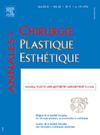经典与双浓剂量肉毒毒素注射治疗鱼尾纹的比较。
IF 0.5
4区 医学
Q4 SURGERY
引用次数: 0
摘要
背景:当涉及到管理肉毒杆菌毒素治疗痛经,一个标准的方法通常是由大多数供应商在剂量浓度方面使用。本研究的目的是比较经典的无双浓缩剂量与双浓缩剂量治疗鱼尾纹的结果。方法:以左侧为对照侧,采用经典浓缩剂量(2单位/ 0.5cm3)注射眼轮匝肌,对比右侧双浓缩剂量(2单位/ 0.25cm3)。使用自动注射注射器进行注射。结果:在对照第14天,我们注意到大多数患者在左侧经典浓度侧的皱纹明显减少(双浓度右侧的皱纹似乎更突出)。在一些患者中注意到的一个好处是眼眶周围节律的外观更对称,有时眉毛的剂量不均匀。结论:我们发现注射双倍浓度的肉毒杆菌毒素并不一定意味着更好地减少皱纹的出现,即使是逆行注射技术。然而,根据患者面部两侧的需要来调整肉毒杆菌毒素的剂量,而不是统一两侧的剂量,可能会产生某些影响。本文章由计算机程序翻译,如有差异,请以英文原文为准。
Comparison of classic vs double concentrated dose botulinum toxin injections in the treatment of crow's feet
Background
When it comes to administering botulinum toxin for treating rhytids, a standard approach is usually used by most providers in terms of dose concentration. The aim of this study is to compare the outcomes of a classic, none double concentrated dose vs. a double concentrated dose for treating crow's feet.
Method
We have injected the orbicularis oculi in a series of 10 patients with the left side as a control side using the classically concentrated dose (2 units per 0.5 cm3) compared to the double concentrated dose on the right (2 units per 0.25 cm3). The injections were administered using an auto-injecting syringe.
Results
On control day 14, we noticed that the majority of patients had a more apparent reduction in wrinkles on the left–classically concentrated–side (wrinkling appeared to be more prominent on the double concentration right side). A benefit noticed in some patients was a more symmetrical appearance of periorbital rhytids and sometimes the eyebrows with the uneven doses.
Conclusion
We found that injecting a double concentrated dose of botulinum toxin does not necessarily mean better reduction in the appearance of wrinkles even with the retrograde injection technique. However, certain implications may be found in tailoring the dosing of botulinum toxin depending on the needs of the patient on opposite sides of the face as opposed to unifying the dose for both sides.
Contexte
Lorsqu’il s’agit d’administrer de la toxine botulique pour traiter des rides, la plupart des injecteurs utilisent généralement une approche standard en ce qui concerne la concentration de la dose. Le but de cette étude est de comparer les résultats d’une dose classique, sans double concentration, par rapport à une double dose concentrée pour le traitement des pattes d’oie.
Méthode
Nous avons injecté l’orbiculaire de l’œil chez une série de 10 patients avec le côté gauche comme côté témoin en utilisant la dose classiquement concentrée (2 unités pour 0,5 cm3) par rapport à la double dose concentrée du côté droit (2 unités pour 0,25 cm3). Les injections ont été administrées à l’aide d’une seringue auto-injectable.
Résultats
Au 14e jour, nous avons remarqué que la majorité des patients présentaient une réduction plus apparente des rides du côté gauche – classiquement concentré – (les rides semblaient plus importantes du côté droit en double concentration). Un bénéfice observé chez certains patients était une apparence plus symétrique des rides et parfois des sourcils avec des doses inégales.
Conclusion
Nous avons constaté que l’injection d’une dose doublement concentrée de toxine botulique ne signifie pas nécessairement une meilleure réduction de l’apparence des rides, même avec la technique d’injection rétrograde. Cependant, certaines implications pourraient être trouvées dans l’adaptation du dosage de toxine botulique en fonction des besoins du patient au niveau des côtés opposés du visage, plutôt que d’unifier la dose pour les deux côtés.
求助全文
通过发布文献求助,成功后即可免费获取论文全文。
去求助
来源期刊
CiteScore
1.00
自引率
0.00%
发文量
86
审稿时长
44 days
期刊介绍:
Qu''elle soit réparatrice après un traumatisme, pratiquée à la suite d''une malformation ou motivée par la gêne psychologique dans la vie du patient, la chirurgie plastique et esthétique touche toutes les parties du corps humain et concerne une large communauté de chirurgiens spécialisés.
Organe de la Société française de chirurgie plastique reconstructrice et esthétique, la revue publie 6 fois par an des éditoriaux, des mémoires originaux, des notes techniques, des faits cliniques, des actualités chirurgicales, des revues générales, des notes brèves, des lettres à la rédaction.
Sont également présentés des analyses d''articles et d''ouvrages, des comptes rendus de colloques, des informations professionnelles et un agenda des manifestations de la spécialité.

 求助内容:
求助内容: 应助结果提醒方式:
应助结果提醒方式:


